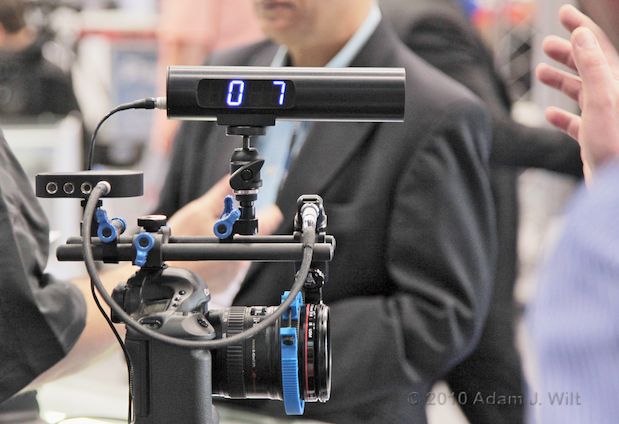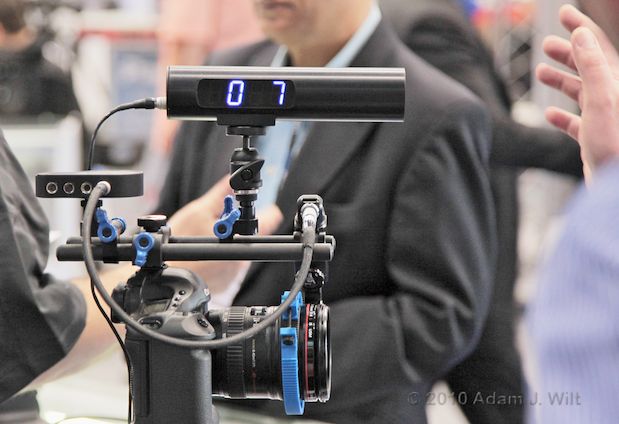
Redrock Micro’s microTape ultrasonic rangefinder.
An ultrasonic rangefinder with focusing-distance readout for $500? Read on…
…but first, some serious slider action: sliders allow smooth camera motions over (relatively) short distances without the bother of having to set up dolly track. Since all the slider is carrying is the camera, not a whole dolly, the slider’s track can be a lot smaller, lighter and easier to rig.
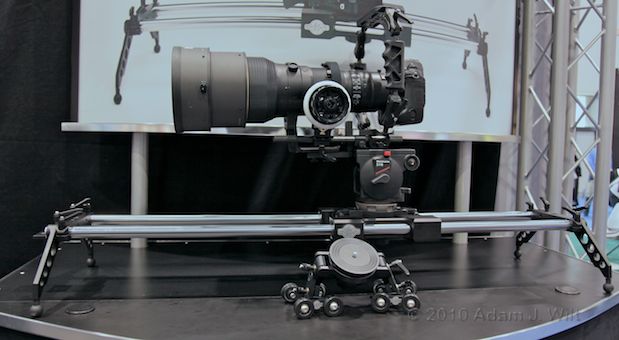
Cinevate Atlas 200 slider system.
This Cinevate system uses recirculating-ball races on 1″ rods. The 200 series can support 200 pounds of gear. A smaller system (Atlas 30) uses 5/8″ rods and supports 30 pounds—plenty of capacity for DSLRs and handycams.
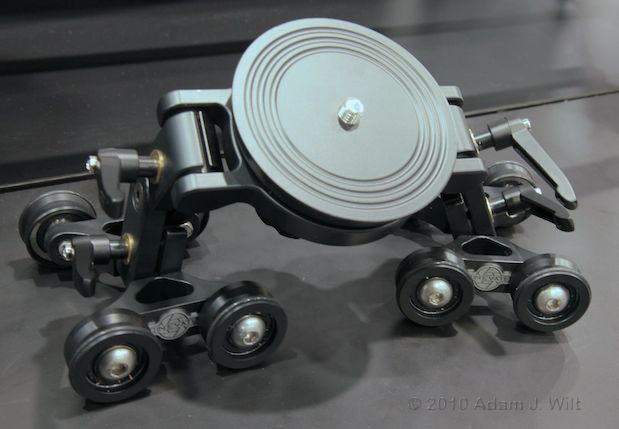
Cinevate Pegasus table dolly.
The Pegasus table dolly works on any smooth surface, and can also work as a slider platform on rods.
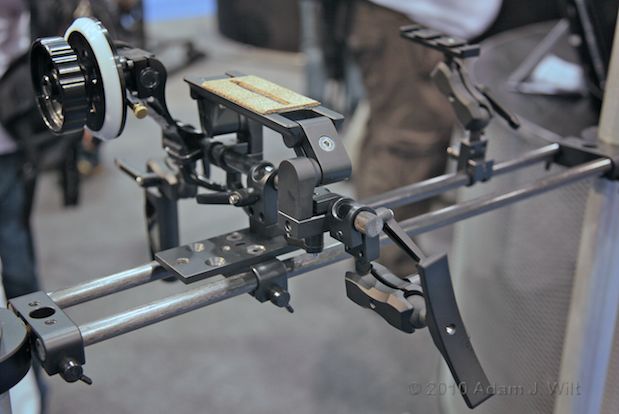
Various support gear at the Cinevate booth.
Cinevate, of course, builds more than sliders; they have all manner of rods, rails, and other bits of support gear.
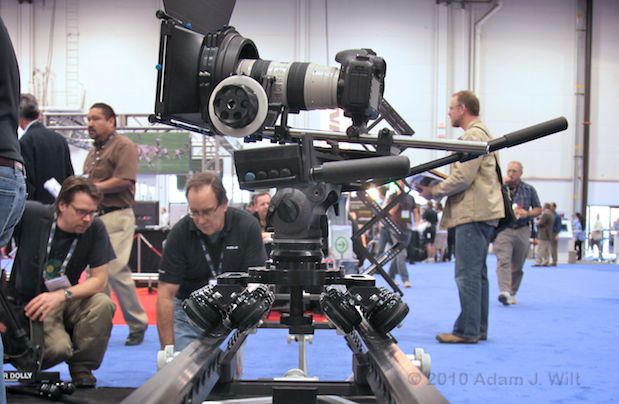
Porta-Jib Explorer trolley system.
The Losmandy Explorer system, sold by Porta-Jib, is a modular system that converts between a jib arm and a trolley system (think of it as a very serious slider system).
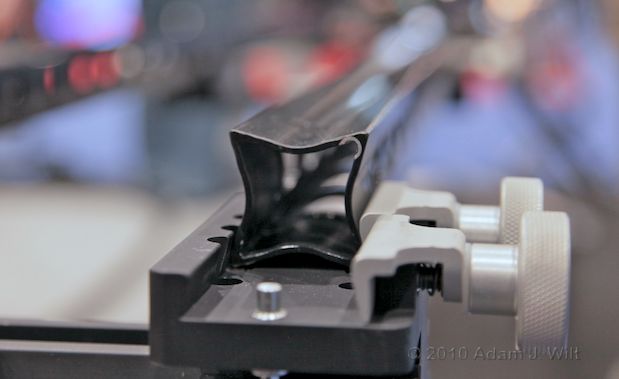
Detail of Explorer clamping system.
The X-shaped beams clamp firmly in place and allow easy extension. The X-shaped beams also allow the wheels of the trolley itself to grip the beams securely.
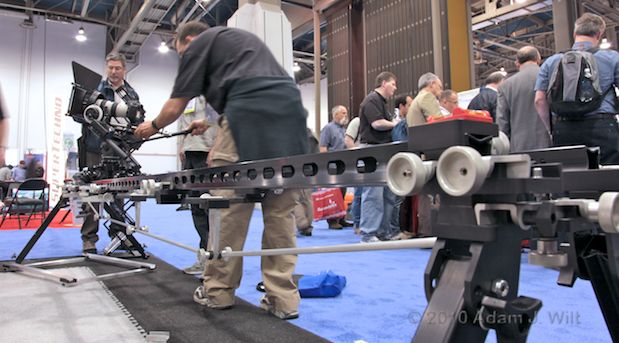
Tension rods let the Explorer system span long distances.
Using tension rods beneath the beams allows the system to span long distances without intermediate supports, useful for rigging the slider across streams and gullies.
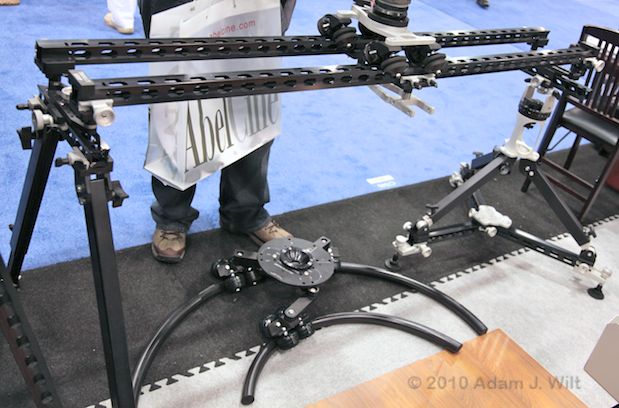
Tracks set up on tripods or on monopod “feet”.
Slider ends can be mounted on standard tripod heads, or on monopod feet that can be rigged at any angle required to provide support and stability.
See sliders in action, along with Cinevate’s amusing small camera stabilizer, in a short video clip.
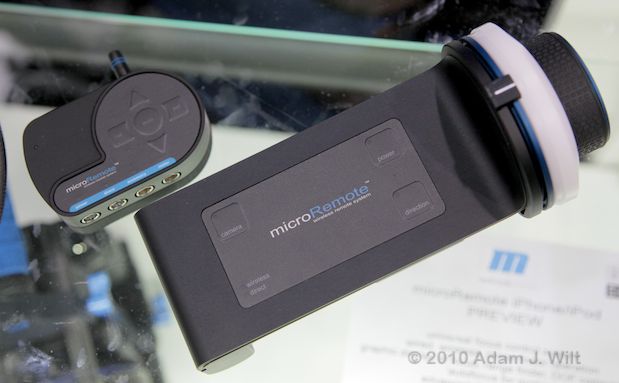
Redrock Micro microRemote handheld controller and wireless receiver.
Redrock Micro, makers of relay lens rigs and cheap-and-cheerful camera support kits, are moving upscale with a wireless remote follow-focus system. The handheld controller will cable directly to a lens motor for under $1000, or it can go wireless with the receiver shown.
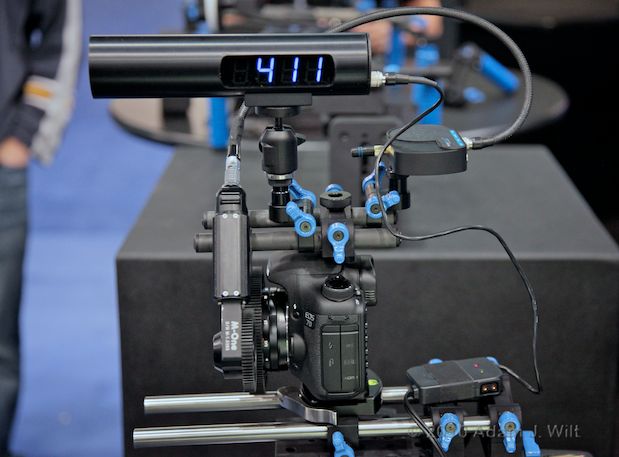
microRemote system installed on DSLR with microTape rangefinder.
The microTape ultrasonic rangefinder, about $500, is part of the system. It reads out the distance to its target in big, friendly blue numbers. Consider that the industry-standard Cine Tape system is around $8000; if Redrock’s microTape proves to be reliable, it’ll shake things up… I know I’ll want one the next time Art Adams has me pulling focus on the 85mm at T1.9!
Now how much would you pay? But wait, there’s more…
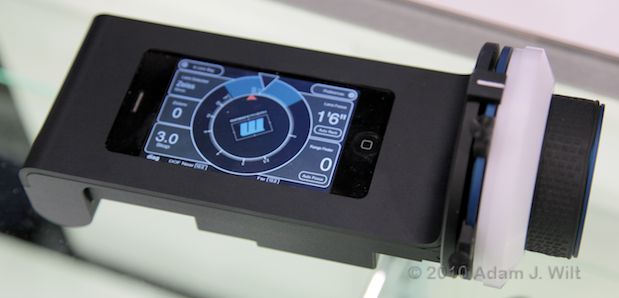
Redrock Micro microRemote with iPhone / iPod Touch installed.
Plop an iPhone or iPod Touch into the handheld controller, and you get a graphical display of your current focus point (black arrowhead), where the microTape thinks you should be focused (red arrowhead), and your depth of field (blue arc). Push a button, and the microTape will even drive the lens in autofocus mode… if you trust it!
Price? About $5000, plus the cost of the iPhone / iPad Touch.
Redrock Micro’s Brian Valenti shows off the system in this short video.
16 CFR Part 255 Disclosure
I attended NAB 2010 on a press pass, which saved me the registration fee or the bother of using one of the many free registration codes offered by vendors. I paid for my own transport, meals, and hotel.
No material connection exists between myself and the National Association of Broadcasters or the various exhibitors I report on (except as noted in my articles, when and if necessary); aside from the press pass, NAB has not influenced me with any compensation to encourage favorable coverage.

Filmtools
Filmmakers go-to destination for pre-production, production & post production equipment!
Shop Now